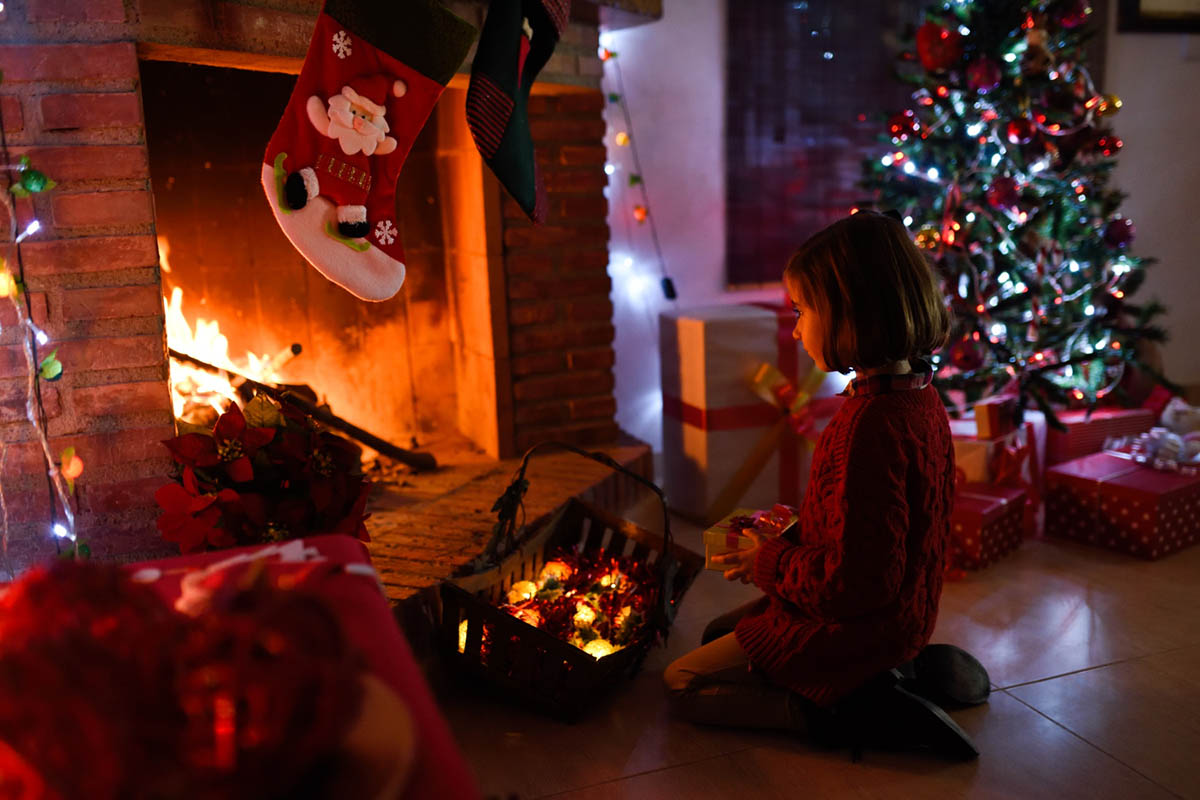Gas fireplaces have become increasingly popular in modern homes, offering convenience, efficiency, and an attractive focal point for any living space. However, amid the comfort and warmth they provide, it is essential to be aware of potential dangers associated with gas fireplaces.
In this article, we will delve into the various risks and safety considerations that come with using gas fireplaces. Understanding these potential hazards and implementing necessary precautions is crucial for ensuring the well-being and safety of your household.
From the insidious threat of carbon monoxide to indoor air quality concerns, we will explore essential information to help you enjoy the comfort of your gas fireplace responsibly.
So, let’s take a closer look at the dangers of gas fireplaces and the measures to mitigate them effectively.
Understanding Gas Fireplaces Dangers
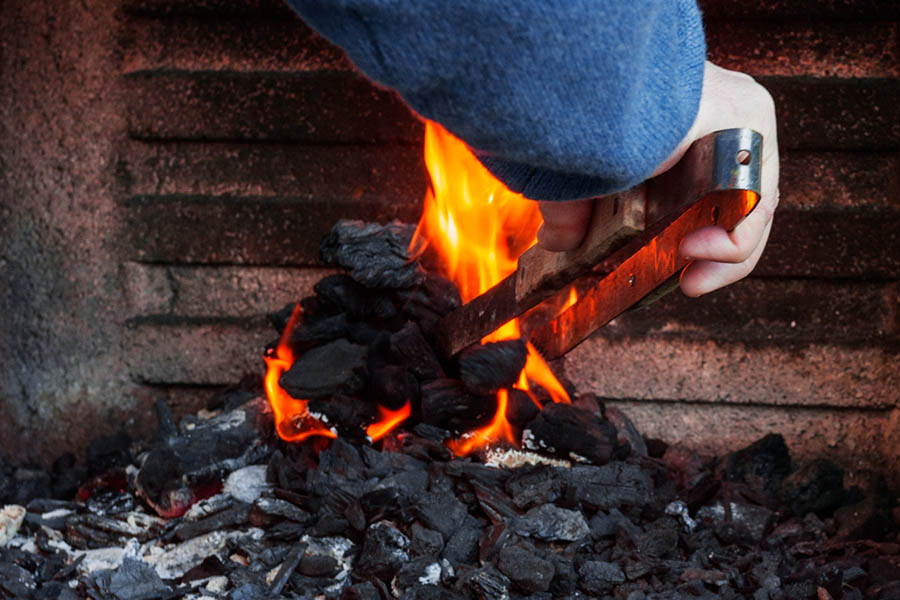
While gas fireplaces offer numerous advantages, they also pose certain risks that homeowners must be mindful of. One of the most significant concerns is the potential for carbon monoxide poisoning.
Carbon Monoxide and Gas Fireplaces
Carbon monoxide (CO) is a colorless, odorless, and tasteless gas that can be produced by burning gas or when natural gas or propane burns incompletely. Gas fireplaces, if not properly maintained or vented, can release this toxic gas into your living space, leading to severe health consequences.
Importance of Carbon Monoxide Detectors
Given the silent nature of carbon monoxide, it is crucial to install carbon monoxide detectors in your home, especially near gas fireplaces and sleeping areas. These detectors can provide early warnings of increased CO levels, allowing you and your family to evacuate safely and seek medical attention if necessary.
Are Gas Stoves Worse than Fireplaces?
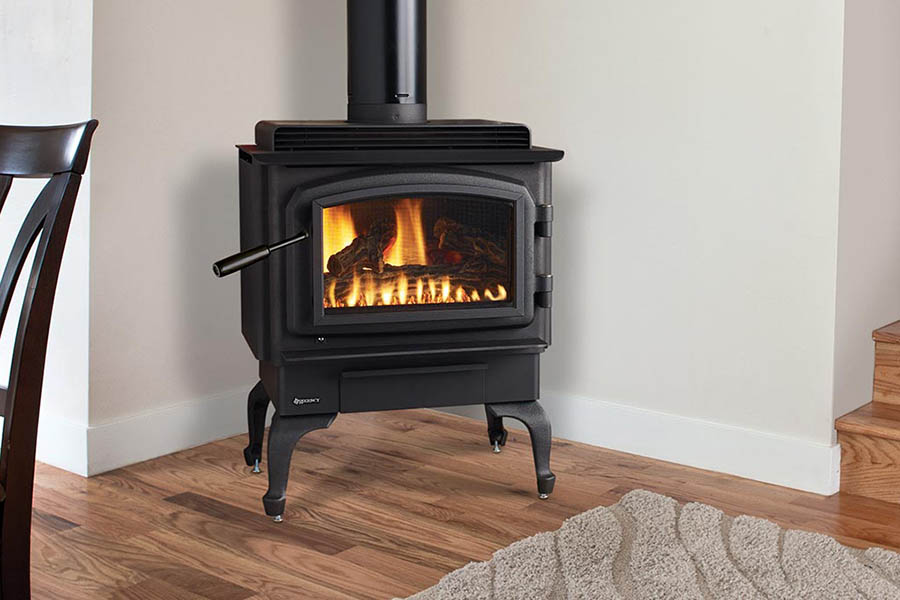
There is a common misconception that gas stoves are more dangerous than fireplaces. In reality, both appliances carry their own set of risks. Gas stoves, if not properly maintained or used incorrectly, can also produce serious carbon monoxide levels, posing health hazards to occupants.
Comparing Gas and Traditional Fireplaces
Gas fireplaces offer distinct advantages over traditional wood-burning fireplaces. They eliminate the need to handle firewood, reduce smoke and ash, and provide instant heat at the flip of a switch. However, these benefits should not overshadow the importance of understanding safety differences between the two types of gas fireplaces work.
Exploring Traditional Wood-Burning Fireplaces
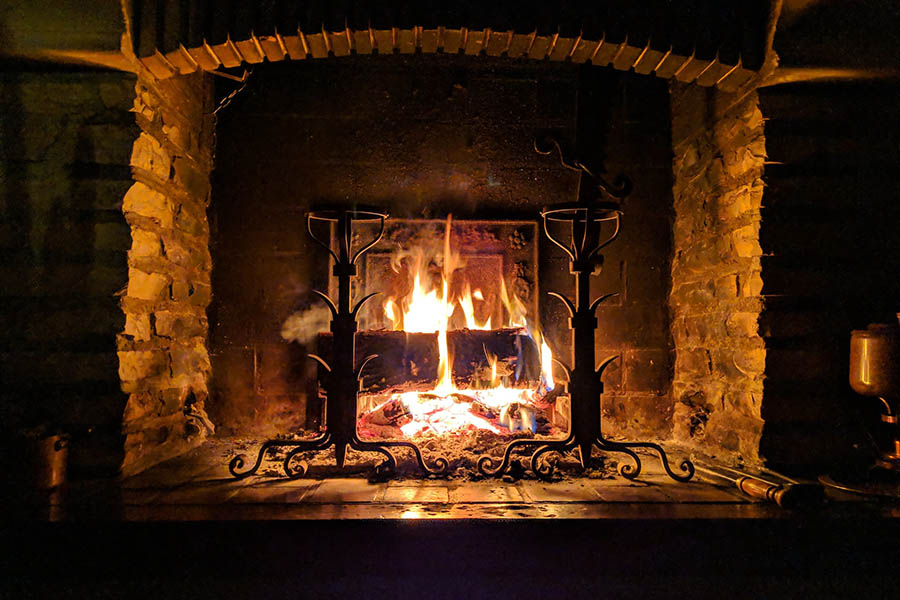
Traditional wood-burning fireplaces exude a nostalgic ambiance and the distinct aroma of burning wood. However, they come with their own set of and present potential safety issues and dangers, such as the buildup of creosote, which can lead to chimney fires, as well as the risk of sparks and embers escaping the hearth.
Potential Risks of Wood or Pellet-Burning Stove Insert
For those with existing fireplaces, wood or pellet-burning stove inserts may seem like an appealing option. These inserts can increase the efficiency of heating, but they require proper installation and regular maintenance to avoid potential risks, such as chimney fires and poor indoor air quality.
Safety Considerations of Vented Gas Logs
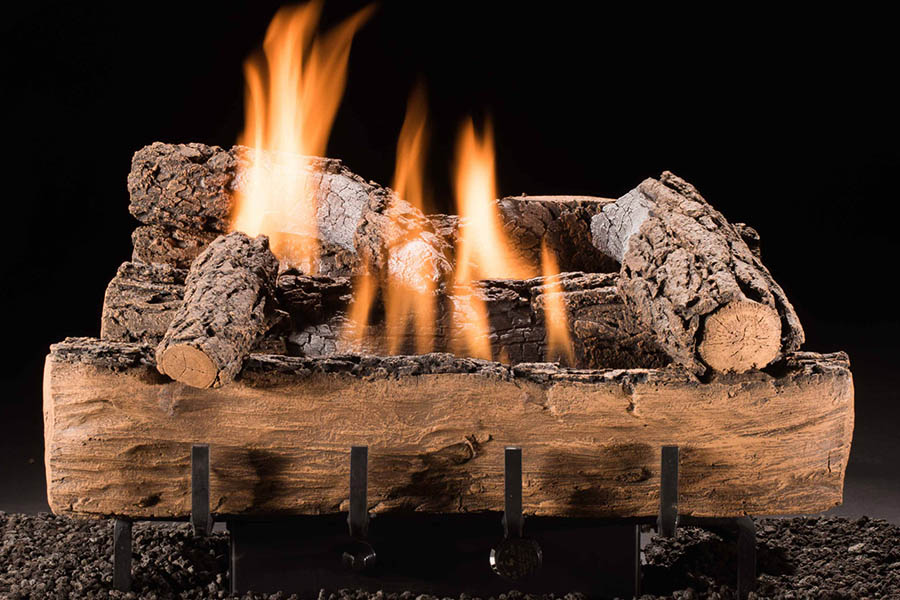
Vented gas logs are designed to closely resemble the appearance of a natural wood-burning fire, making them an attractive option for many homeowners. However, it’s essential to consider safety aspects when using vented gas logs.
Unlike ventless gas logs, which release combustion byproducts directly into the room, vented gas logs require proper ventilation. A well vent, chimney or flue is necessary to direct the harmful gases, including carbon monoxide, outside the house.
To ensure the safe operation of vented gas logs, regular inspection and maintenance of the chimney or flue are crucial. Blockages, creosote buildup, or damage to the venting system can hinder the proper expulsion of combustion byproducts, leading to potential health hazards for occupants.
Relative Harmfulness of Gas Stoves and Other Appliances
Gas stoves and appliances, including gas fireplaces, contribute to the indoor air quality of your home. Inefficient or incomplete combustion, or inadequate ventilation can lead to the release of harmful pollutants and fine particles. While gas fireplaces are generally safe when correctly installed and maintained, it is essential to be mindful of the cumulative impact of multiple gas-powered appliances on your indoor air.
Regularly inspecting and servicing gas-fueled appliances, along with ensuring proper ventilation and adequate airflow, can significantly reduce the potential risks associated with indoor air pollution.
The Absence of Wood Aroma in Gas Fireplaces
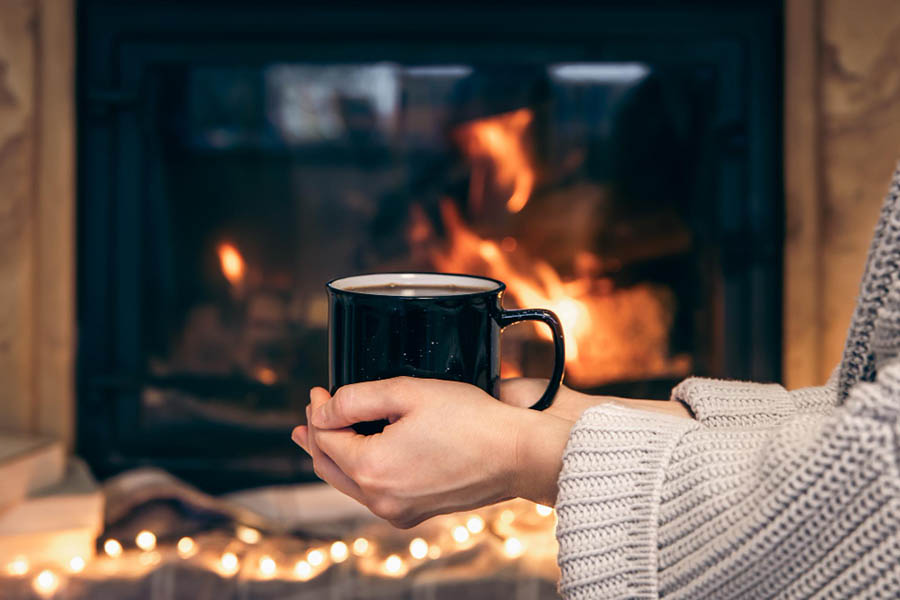
One aspect that distinguishes gas fireplaces from traditional wood-burning fireplaces is the absence of the familiar and cozy wood aroma. Some homeowners find this comforting scent essential to the fireplace experience, and the lack of it vented gas fireplaces can be a drawback for those seeking an authentic ambiance.
While the convenience and cleanliness of gas and electric fireplaces may outweigh this factor for some, others may miss the sensory experience of a real wood fire. However, it is crucial to prioritize safety over ambiance, and this trade-off should be carefully considered.
Gas Fireplaces Safety Precautions
To enjoy the warmth and ambiance of wood burning fireplace over a gas fireplace without compromising safety, certain precautions should be taken:
- Professional Installation: Ensure that a qualified technician installs the gas fireplace according to manufacturer specifications and local building codes.
- Regular Maintenance: Schedule regular inspections and maintenance to identify and address potential issues promptly.
- Carbon Monoxide Detectors: Install CO detectors in your home, preferably near bedrooms and gas appliances, and regularly check their functionality.
- Proper Ventilation: If using vented gas logs or appliances, ensure that the chimney or flue is clear and functioning correctly.
- Keep Flammable Items Away: Keep flammable materials such as paper, fabric, and furniture at a safe distance from the fireplace.
- Supervise Children and Pets: Always supervise children and pets when the gas fireplace is in use to prevent accidents.
- Extinguish Flames Properly: Turn off the gas supply and ensure the flames are fully extinguished before leaving the room or going to sleep.
By following these safety precautions, you can enjoy the comfort and warmth of your gas fireplace while minimizing potential risks and hazards.
Improving Air Quality in Your Home
Maintaining good indoor air quality is essential for the health and well-being of your family. When using gas fireplaces or other gas-fueled appliances, consider implementing the following measures to improve air quality:
- Ventilation: Open windows or use exhaust fans to improve air circulation and reduce indoor air pollution.
- Air Purifiers: Invest in air purifiers equipped with HEPA filters to capture fine particles and pollutants.
- Regular Cleaning: Dust, vacuum, and clean regularly to minimize indoor air contaminants.
- Properly Sized Appliances: Ensure that gas-fueled appliances are appropriately sized for your space to prevent overuse and excessive emissions.
- Outdoor Air Intake: If possible, use outdoor air for combustion in gas fireplaces to reduce indoor air pollution.
The Role of Proper Venting
Proper venting plays a crucial role in ensuring gas fireplace safety. Venting facilitates the safe disposal of combustion by-products, including carbon dioxide and carbon monoxide, outside the home. If a gas fireplace is not adequately vented, harmful gases can accumulate indoors, posing a severe health risk to occupants.
If you have a gas fireplace or are considering installing one, make sure to vent it correctly and conduct regular inspections of the venting system to maintain its effectiveness. These measures will help guarantee the safe dispersion of combustion by-products and ensure a healthy and secure indoor environment for everyone in the home.
Limitations of Gas Fireplaces Compared to Natural Fire
While gas fireplaces offer numerous benefits, they may not fully replicate the experience of a natural wood-burning fire. Some limitations include:
- Authenticity: Gas fireplaces lack the crackling sound and distinct smell of burning wood, which contributes to the nostalgic ambiance of traditional fires.
- Flame Size: Gas fireplace flames may not be as large or dynamic as those of a natural wood fire, which can impact the overall aesthetics.
- Dependency on Gas Supply: Gas fireplaces require a reliable natural gas supply to function, which may not be available in all areas.
Despite these limitations, many homeowners find the convenience, cleanliness, and energy efficiency of gas fireplaces to be compelling reasons to choose them over traditional wood-burning options.
The Size and Allure of Gas Fireplace Flames
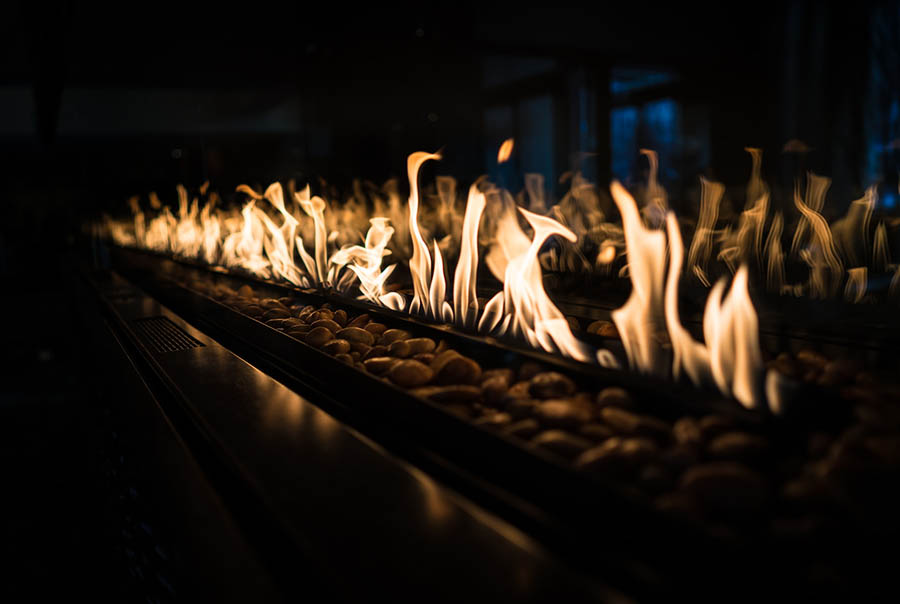
Gas fireplace flames can vary in size and appearance based on the type of gas logs used and the design of the fireplace. While they may not possess the same level of unpredictability and intensity as natural wood flames, modern gas fireplaces often incorporate realistic and aesthetically pleasing gas log sets that closely mimic the appearance of traditional wood burning fireplace with wood.
These gas log sets are available in various styles, including realistic wood replicas and contemporary designs, offering homeowners a range of options to suit their preferences.
The Need for a Natural Gas Connection in Installing Gas Fireplaces
Before installing a gas fireplace, it is essential to consider the availability of a natural gas connection. Unlike wood-burning fireplaces that rely on a readily available fuel source (wood), natural gas fireplaces will require a constant supply of natural gas or propane.
Ensure that your property has access to a natural gas line or that you have access to propane delivery services to fuel your gas fireplace.
Conclusion
In conclusion, gas fireplaces provide a convenient and efficient heating option for modern homes. However, it is crucial to be aware of the potential dangers they can pose, particularly related to carbon monoxide emissions and indoor air quality.
By following essential safety precautions, installing carbon monoxide detectors, and prioritizing proper venting, you can enjoy the warmth and ambiance of your gas fireplace while ensuring the safety and well-being of your household.
Remember, a well-maintained and properly operated gas fireplace can bring joy and comfort for years to come.
As always, when it comes to gas appliances and safety, consult a qualified professional for installation, maintenance, and any concerns you may have regarding your gas appliance. Stay warm, safe, and happy in the company of your gas fireplace!

